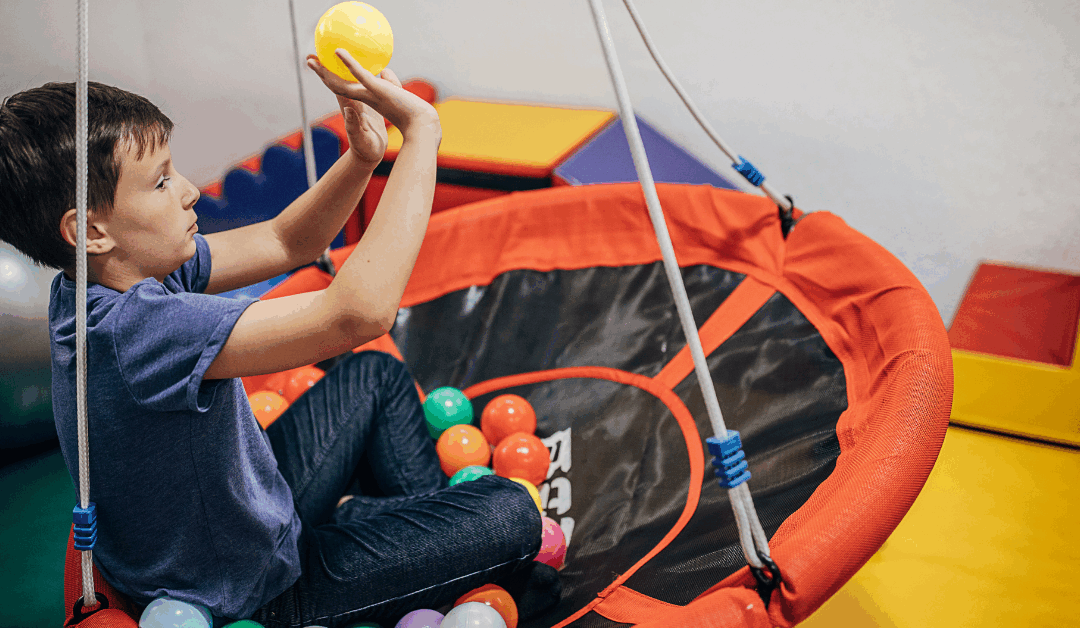Imagine walking into a room and immediately feeling your shoulders relax. The lights are soft, soothing sounds play in the background, and there’s a cozy spot just for you. Now imagine that room is designed entirely around calming your senses or gently stimulating them in just the right way. Welcome to the wonderful world of sensory rooms.
Whether you’re a parent, teacher, therapist, or someone curious about the many ways we can support sensory processing and emotional regulation, sensory rooms are powerful tools for people of all ages—especially those with autism, ADHD, anxiety, trauma histories, or sensory processing challenges.
And if you’ve never experienced one? Don’t worry.
We’re about to walk you through everything you need to know—from what a sensory room actually is to why it matters more than ever.
What Is a Sensory Room?
Let’s start at the beginning.
A sensory room is a specially designed space that provides a variety of sensory inputs—visual, tactile, auditory, vestibular (movement-related), and even olfactory (smell). These rooms are carefully curated to either stimulate the senses when needed (for focus or alertness) or calm them (for regulation and relaxation).
Think of them as emotional toolkits—except instead of words or instructions, these spaces use light, sound, texture, and movement to support the nervous system.
Sensory rooms can be large or small, simple or high-tech. Some are cozy corners with bean bags and noise-canceling headphones. Others have bubble tubes, fiber-optic lighting, and interactive projections.
No two are exactly the same—but the goal is always this: to meet sensory needs in a way that supports safety, regulation, and comfort.
What Are Sensory Rooms Used For?
This is where things get exciting—because sensory rooms can serve so many purposes.
For kids (and adults!) with sensory processing challenges, autism, ADHD, or anxiety, sensory rooms offer a safe place to self-regulate. They’re often used in schools, therapy centers, hospitals, and even homes to help people calm down, reset, or get the input they need to feel grounded.
Here are just a few common uses:
1. Emotional Regulation
When someone feels overstimulated, dysregulated, or anxious, a sensory room provides a calming environment to help them self-soothe.
2. Focus and Stimulation
On the flip side, sensory rooms can also gently stimulate underactive systems. For example, someone who’s tired or disengaged might benefit from lights, music, or tactile stimulation to help increase alertness.
3. Therapeutic Work
Occupational therapists, speech therapists, and mental health professionals often use sensory rooms as part of therapy sessions to help clients feel safe, engaged, and ready to participate.
4. Break Spaces in Schools
Many schools now use sensory rooms (or sensory corners) as a tool for students who need a break—not as punishment, but as care. These rooms can prevent meltdowns, support focus, and empower kids to advocate for their own needs.
5. Support for Neurodivergent Individuals
For people on the autism spectrum or those with sensory sensitivities, sensory rooms aren’t a luxury—they’re essential spaces for survival and success in overwhelming environments.
And guess what? They aren’t just for kids. Adults dealing with high stress, PTSD, or burnout can also benefit from a sensory-friendly space.
What Kind of Sensory Room Equipment Is Common for Sensory Room Ideas?
Let’s get into the fun part—designing a sensory room!
There’s no one-size-fits-all formula here. The best sensory rooms are built around individual needs. Some people need calm and quiet. Others need motion or bright visual input. The beauty is in the customization.
Here’s a list of common equipment and ideas to inspire your sensory space:
1. Lighting
- Fiber optic lights
- Bubble tubes
- Lava lamps
- Color-changing LED strips
- Dim lighting or blackout curtains
Lighting plays a big role in how the space feels. Soft, low lighting is ideal for calming. Bright, shifting lights can be energizing or attention-grabbing.
2. Seating & Comfort
- Bean bags
- Crash pads
- Sensory swings or hammocks
- Body socks
- Weighted blankets or lap pads
Comfortable, grounding seating helps create a safe place to melt into.
3. Tactile Elements
- Fidget toys
- Sensory bins (with rice, beans, sand, etc.)
- Wall panels with textures
- Squish balls, putty, or kinetic sand
Tactile play helps regulate the nervous system and can provide either calming or alerting input.
4. Auditory Tools
- Noise machines (white noise, nature sounds)
- Bluetooth speaker for calming playlists
- Noise-canceling headphones
- Instruments like rain sticks or drums
Sound can be incredibly therapeutic—soothing or stimulating, depending on what’s needed.
5. Visual Supports
- Mirrors
- Projectors with moving images
- Visual schedules or calm-down charts
- Bubble walls
Visuals can guide regulation, help communicate needs, or provide focus.
6. Movement Equipment
- Rocking chairs
- Balance boards
- Trampolines
- Spinning seats
For those who seek vestibular (movement) input, this equipment is key to staying regulated.
The best part? You don’t need an entire room. Even a small corner, closet, or tent filled with a few of these elements can be a powerful sensory room.
Why Are Sensory Rooms Important?
Let’s go deeper for a second.
Sensory rooms are about more than fun lights or cool gadgets. They’re about dignity. About offering people—especially those who are often misunderstood or overwhelmed—a space where their needs are honored, not punished.
They’re important because:
- They teach self-regulation in a safe, respectful way
- They reduce meltdowns, shutdowns, and outbursts by meeting needs early
- They create inclusive environments for neurodivergent individuals
- They offer moments of calm in a world that’s often overstimulating and chaotic
- They empower individuals to better understand and communicate their sensory needs
For some, a sensory room is the first place they’ve ever felt truly safe. And that kind of space? It changes lives.
Final Thoughts: Every Nervous System Deserves a Safe Place
Whether you’re building a full sensory space at school, creating a corner at home, or advocating for more inclusive environments—sensory rooms are a gift.
They’re an act of care. Of empathy. Of believing that regulation, joy, and peace shouldn’t be reserved for people who can “tough it out.” Everyone deserves to feel calm. Everyone deserves support.
So if you’ve been curious about sensory rooms, now’s the time to explore. Build one. Visit one. Share the idea with someone who needs it.
Because when we create sensory-safe spaces, we’re saying:
You matter. Your body matters. Your needs are valid.
And that’s a message we could all use a little more of.
Want A Helping Hand?
Hope Human Services provides disability services in Washington State. Our team doesn’t just provide support, we create exceptional life experiences.

